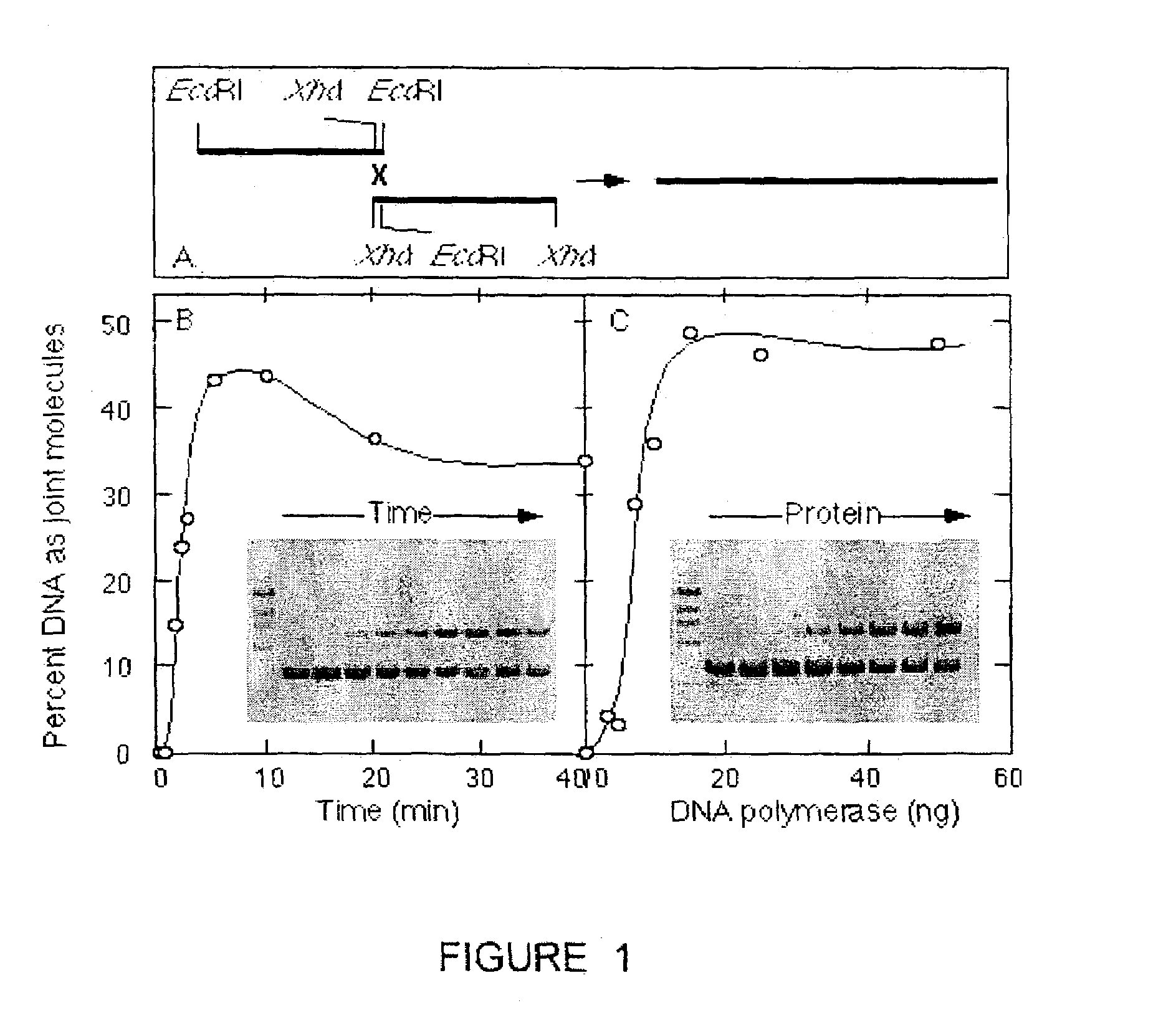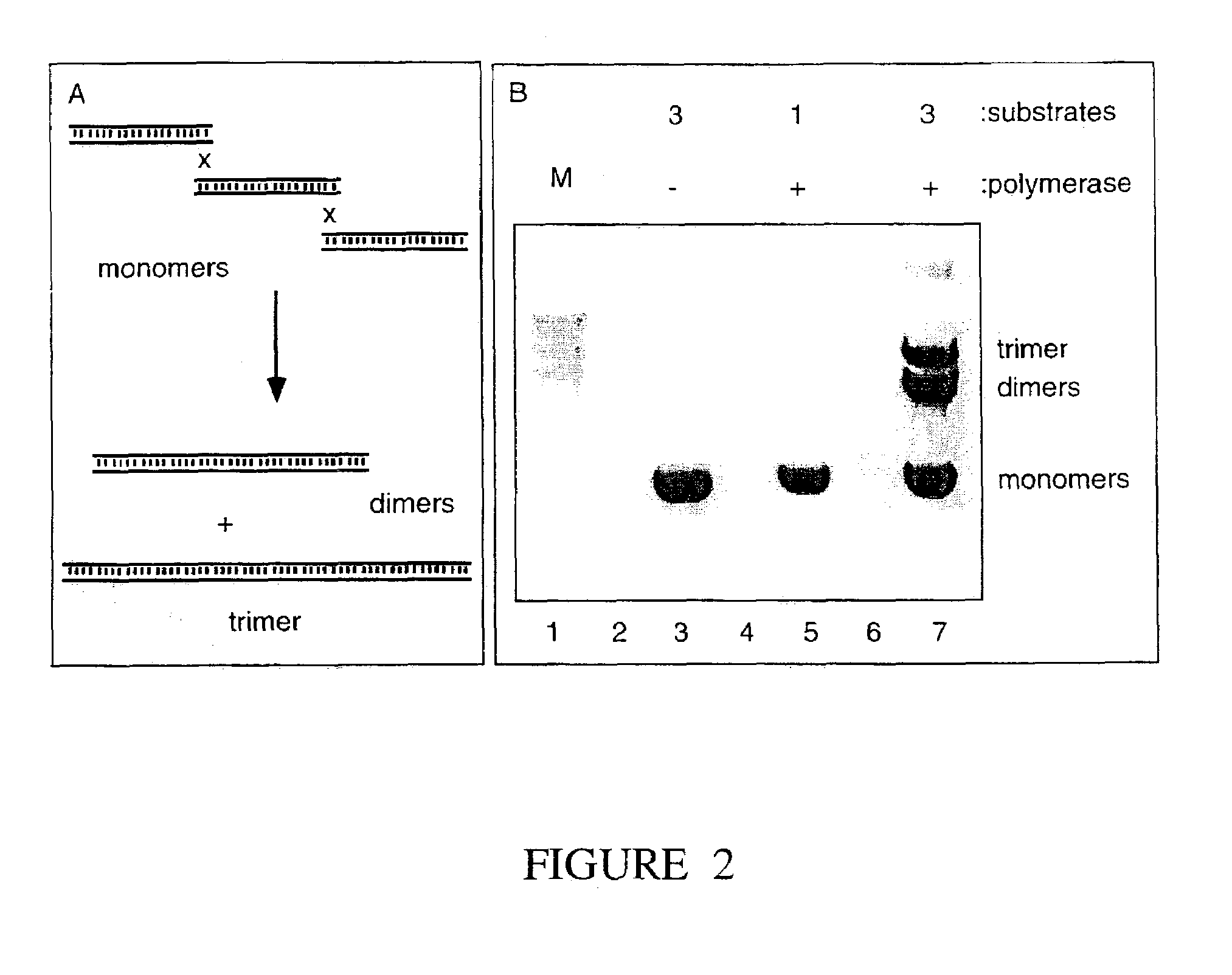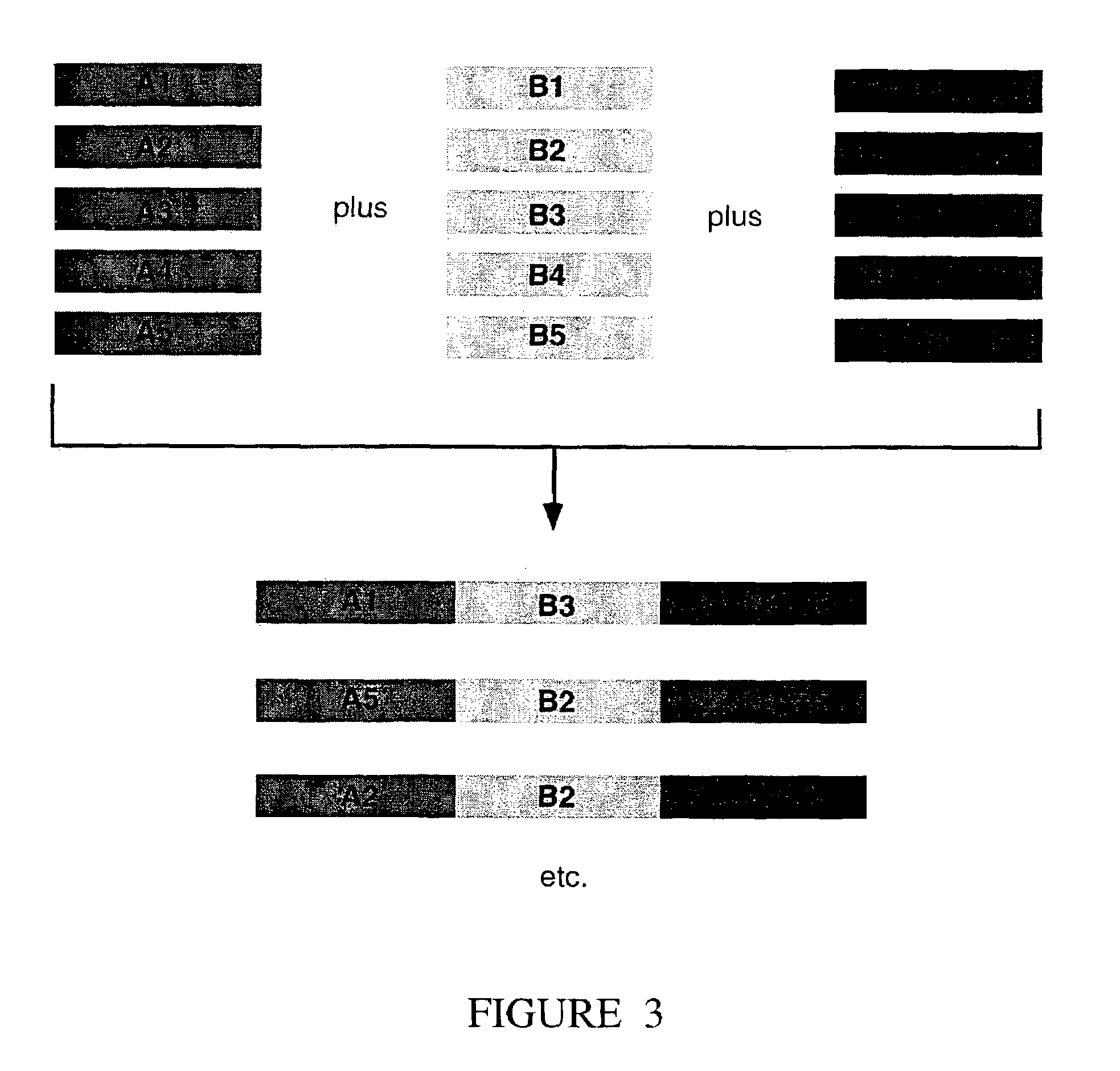DNA joining method
a dna and plasmid technology, applied in the field of recombinant dna technology, can solve the problems of difficult determination, loss of sequences within the pcr-amplified region, and notoriously poor cutters
- Summary
- Abstract
- Description
- Claims
- Application Information
AI Technical Summary
Benefits of technology
Problems solved by technology
Method used
Image
Examples
experimental examples
Materials and Methods
[0143]Linear substrates were prepared by restriction enzyme digestion of plasmid pDW101, followed by phenol extraction and ethanol precipitation. pDW101 derives from pBluescript (KS+) (Stratagene) through a spontaneous deletion of nucleotides 618, 619 and 621. In some experiments, the linear substrates were purified by agarose electrophoresis and extracted from the agarose using a Geneclean II kit (New England Biolabs). [α−32P] dCTP and [γ−32P] dATP were purchased from NEN / Mandel Scientific. End labeled substrates were generated by treatment with shrimp alkaline phosphatase (United States Biochemical, Cleveland), followed by incubation with either T4 polynucleotide kinase and [γ−32P] dATP (3000 Ci / mmol) or Klenow enzyme and [α−32P] dCTP (3000 Ci / mmol). Unincorporated radionucleotides were removed by G-25 spin columns (Pharmacia) and radioactivity was quantitated by Cherenkov (Schneider, 1971). HindIII-digested lambda phage DNA and HaeIII-digested ΦX174 DNA marke...
experiment 1
Vaccinia DNA Polymerase Purification
[0145]Purification of vaccinia DNA polymerase from vaccinia-infected BSC-40 cells has been described (McDonald and Traktman 1994; Willer, Mann et al. 1999). Briefly, a crude lysate from 60 150-cm2 dishes of BSC40 cells co-infected with vTMPOL and VTF7. was subjected to purification through DEAE cellulose, phosphocellulose, ceramic hydroxyapatite and HiTrap heparin columns. Active fractions eluting at each chromatographic step were determined by DNA polymerase assays (Willer, Mann et al. 1999). Protein purity was determined by silver staining of denaturing polyacrylamide gels. Protein concentrations were assayed by using a dye-binding assay (Biorad) and a bovine serum albumin standard.
experiment 2
Assay for Correct DNA Polymerase Activity
[0146]We measure the intrinsic strand joining activity of DNA polymerases, such as those encoded by bacteriophage (e.g. T4, T7), bacteria (e.g. E. coli), fungi (e.g. S. cerevisiae) and viruses (e.g. poxviruses, herpes viruses, adenoviruses, African swine fever virus and other Iridoviruses, and Bacculoviruses). The polymerases are assayed to measure their activity in the DNA joining reaction by incubating a reaction mixture comprising 30 mM Tris-HCl (pH 7.9 ), 5 mM MgCl2, 70 mM NaCl, 1.8 mM dithiothreitol, 88 μg / mL acetylated BSA, 350 ng of each of a first and second linear DNA substrate and the polymerase to be assayed. The first and second linear DNA substrate must have complementary nucleotide sequences on their right and left ends respectively and may be obtained by a variety of methods including chemical synthesis and derivation of nucleic acid fragments from native nucleic acid sequences existing as genes, or parts of genes, in a genome,...
PUM
| Property | Measurement | Unit |
|---|---|---|
| Temperature | aaaaa | aaaaa |
| Temperature | aaaaa | aaaaa |
| Temperature | aaaaa | aaaaa |
Abstract
Description
Claims
Application Information
 Login to View More
Login to View More - R&D
- Intellectual Property
- Life Sciences
- Materials
- Tech Scout
- Unparalleled Data Quality
- Higher Quality Content
- 60% Fewer Hallucinations
Browse by: Latest US Patents, China's latest patents, Technical Efficacy Thesaurus, Application Domain, Technology Topic, Popular Technical Reports.
© 2025 PatSnap. All rights reserved.Legal|Privacy policy|Modern Slavery Act Transparency Statement|Sitemap|About US| Contact US: help@patsnap.com



